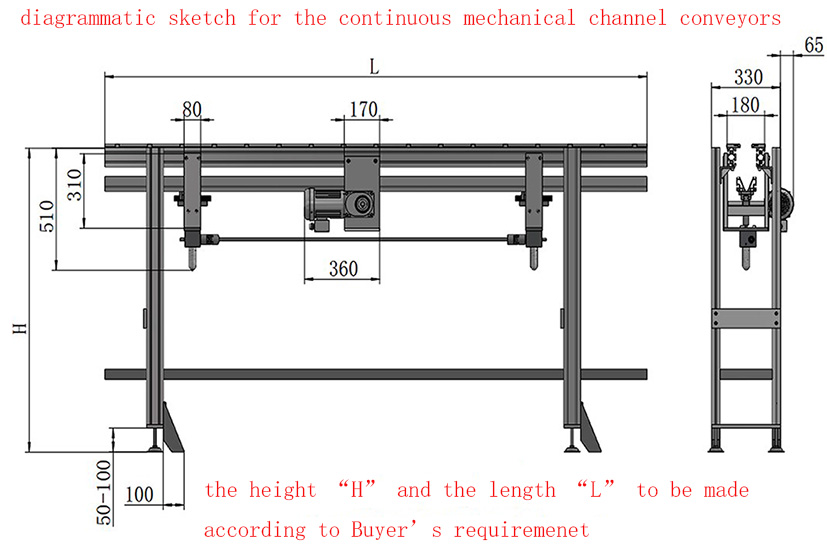Connecting Rod Stepper Conveyor
Application and working principle:
The connecting rod step moving channel conveyors are mainly used for the automatic transmission for connecting rods to be ground between the preceding operation and the succeeding operation of the processing lines. The connecting rods move forward in the way of peristalsis step. The transmissions are smooth and unhindered. No work pieces are being blocked. There is no need for manual intervention during the whole operation. Such step moving channel conveyors avoid the knocking and damaging of the connecting rods during work pieces transmission, improving the appearance of the finished work piece and also increasing working efficiency, reducing the labour working intensity.
We manufacture straight section, right angled curve section, S-bend section of the step moving channel conveyors. We can make various layout forms of the step moving channel conveyors to match your connecting rod processing lines.
The working principle of the step moving channel conveyors:
By adopting the decelerating motor and and eccentric wheel, it changes the circular motion of the engine into the linear motion to drive the V shaped groove to make reciprocating linear action.
The small end of the connecting rod is placed in the peristalsis moving groove on the top of the conveyor. The round supporting rails on both sides on the top of the conveyor hold the large end of the connecting rod, so that the connecting rod is placed vertically but leaning forward.
When the V-shaped groove shifts forward, because the force of the friction of the small end of the connecting rod is greater than the force of the friction on the top of the supporting rails of the conveyor due to the action of gravity, the friction force makes the connecting rod move forward. When the V-groove shifts backwards, the force of the friction of the big end of the connecting rod becomes greater than that of the small end of the connecting rod, the connecting rod remains still in place, when the V-groove shifts forward again, the connecting rod moves forward with one more step again.
The connecting rod moves forward in the way of peristalsis step to realize the purpose of the automatic transmission of the connecting rods.







